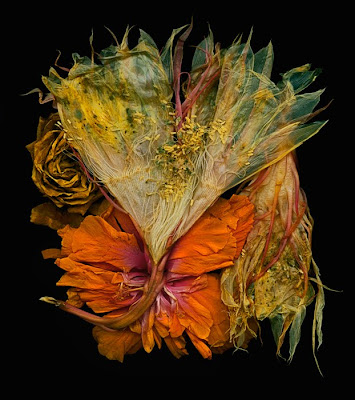Ed Martin
I recently co-curated a show for LACMA’s Photographic Arts Council (see yesterday’s post), and the best part of the process was discovering image makers in my own community that I wasn’t aware of. Ed Martin is one of those photographers. His work is spectacular, and what’s even more spectacular is that Ed was born in 1926 and is making work that is so completely contemporary and rich with beauty.
Ed’s website reflects a long, fascinating biography, describing a difficult childhood, attending Art Center more than 50 years ago, raising a family of 4, and gaining a reputation as one of Hollywood’s’ top commercial cameraman. For the last two decades, Ed has been pursuing still photography full time. After a lifetime of creative work, he still views the artistic process as a mystical and cathartic experience. Though not formally religious, Ed is closest to Buddhism. “I believe there is no waste in the universe, only transformation of matter and energy. The soul can never be lost.” His photographs are a testament to this philosophy; his life a testament to art. In a society of distraction and technological comforts, which serve only to minimize human interaction and self-exploration, art is a necessary form for communicating the beauty of the human condition. Art is our truest expression of humanity; without it we are lost.
I look for the unusual in flower form and small plant and animal life—each sessions in the darkroom or with my scanner is a creative experience and a trip into the unknown. I manipulate these botanical items I gather with my home grown techniques—-I compose arrangements on my scanner as I think they should be, but more often the material kind of haphazardly slips into place, so I work our a composition from what is happening.
By cutting and opening plants and flowers with a razor blade, I find exciting small views that I have never imagined before and I record those on my scanner. Adding lamp oil to these mixes in a glass bottomed dish also is a wonderful way of slowly transforming flowers into wraith like creatures. I record the different stages which may take up to a week. I also have learned to manipulate with photoshop and use it sometimes to enhance or diminish aspects of this imagery.
Posts on Lenscratch may not be reproduced without the permission of the Lenscratch staff and the photographer.
Recommended
-
Ragne Kristine Sigmond: Portraits of Painterly LightDecember 2nd, 2025
-
Mary Pat Reeve: Illuminating the NightDecember 1st, 2025
-
Ricardo Miguel Hernández: When the memory turns to dust and Beyond PainNovember 28th, 2025
-
Pamela Landau Connolly: Columbus DriveNovember 26th, 2025
-
MATERNAL LEGACIES: OUR MOTHERS OURSELVES EXHIBITIONNovember 20th, 2025




































































